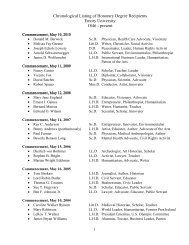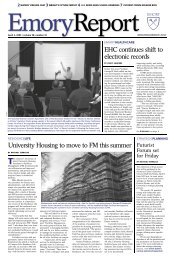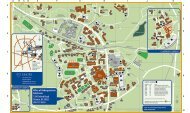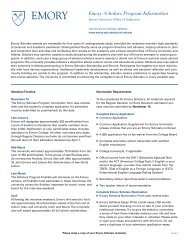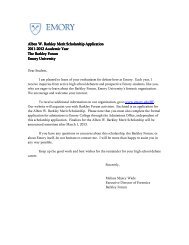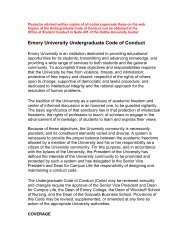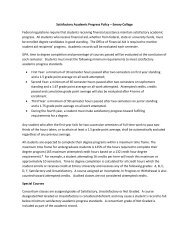DOSY Experiments - Emory University
DOSY Experiments - Emory University
DOSY Experiments - Emory University
You also want an ePaper? Increase the reach of your titles
YUMPU automatically turns print PDFs into web optimized ePapers that Google loves.
Figure 5 Excerpt from a typical probe file, showing the parameters stored during the NUG processing.<br />
Probe gradient coefficients: the parameters Probegradcoeff1, Probegradcoeff2,<br />
…, Probegradcoeff9, which correspond to the power series coefficients that describe<br />
the gradient shape produced by the probe. These coefficients are not used for the<br />
processing of data measured using the standard Varian-supplied <strong>DOSY</strong> pulse<br />
sequences, but are useful for the analysis of 'pureshift' and other spatially-resolved<br />
<strong>DOSY</strong> datasets ("Pure shift Proton <strong>DOSY</strong>: Diffusion-Ordered 1H Spectra without multiplet<br />
structure." M. Nilsson and G.A. Morris, Chem. Commun. 2007, 933-935.).<br />
Non-uniform gradient (NUG) coefficients: the parameters Probenugcal1,<br />
Probenugcal2, …, Probenugcal5, which describe the actual signal decay (as<br />
opposed to the 'idealized' signal decay described by the S-T equation). During the<br />
processing of routine <strong>DOSY</strong> data, if the Correct for non-uniform gradients option<br />
(nugcal='y') is selected on the <strong>DOSY</strong> Process panel then signal decays are fitted to<br />
an equation of the form:<br />
⎡ 5<br />
⎤ n 2n<br />
S(<br />
G)<br />
= S(<br />
0)<br />
exp⎢−<br />
∑ nugcalnη<br />
G ⎥<br />
[2]<br />
⎢⎣<br />
n=<br />
1<br />
⎥⎦<br />
where η = Dγ 2 δ 2 Δ and G is the nominal gradient amplitude.<br />
A 'corrected' gcal: the parameter Probegcal_corrd corresponds to the conversion<br />
factor from gradient DAC units to the average gradient strength (in G/cm) across the<br />
sample:<br />
Average gradient strength (G/cm) = gcal_corrd × gradient DAC units<br />
gcal_corrd provides a more accurate estimate of the average gradient strength across<br />
the sample than gcal. Note that when subsequent <strong>DOSY</strong> experiments are set up, the<br />
value of gcal_corrd is used in place of gcal (and is stored locally as gcal_). Using<br />
gcal_corrd results in diffusion coefficients that converge upon the same values with<br />
and without non-uniform gradient correction, as the degree of diffusion weighting is<br />
reduced (i.e. for low signal attenuation).<br />
18






